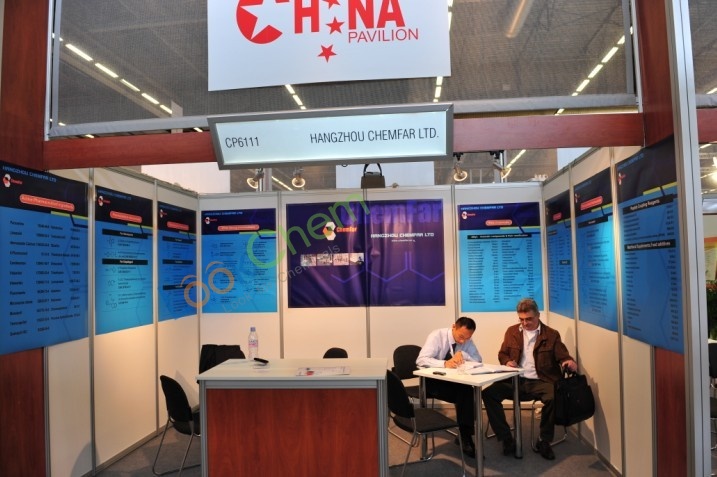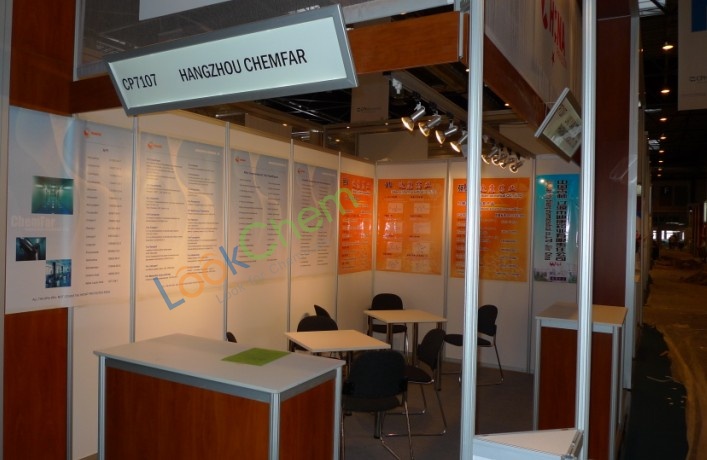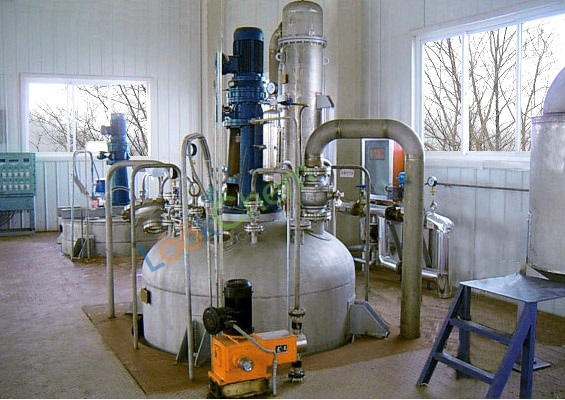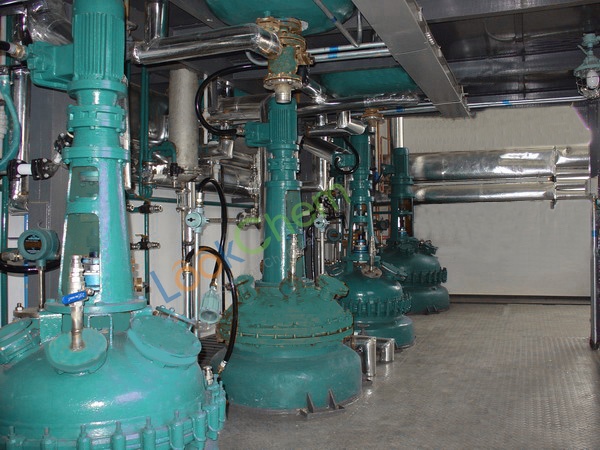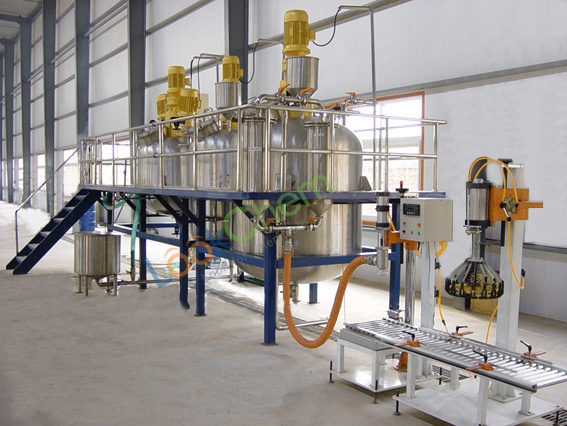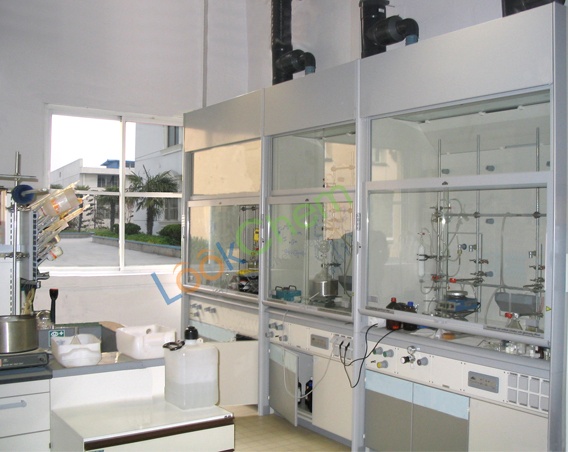Acetonitrile msds
- Product Details
- Company Profile
Acetonitrile (CAS No. 75-05-8) msds detailed information are provided by Hangzhou Chemfar Ltd., which has more than 20 years' experience focused on providing integrated development and manufacturing service to the pharmaceutical and fine chemical industry.
1. PRODUCT AND COMPANY IDENTIFICATION
Product name: Acetonitrile
2. HAZARDS IDENTIFICATION
Emergency Overview
OSHA Hazards
Flammable liquid, Target Organ Effect, Harmful by ingestion., Harmful by skin absorption., Irritant
Target Organs
Lungs, Blood, Kidney, Liver, Central nervous system
GHS Label elements, including precautionary statements
Danger
Highly flammable liquid and vapour.
Harmful if swallowed or in contact with skin.
Causes mild skin irritation.
Causes serious eye damage.
Harmful if inhaled.
Keep away from heat/sparks/open flames/hot surfaces. - No smoking.
Wear protective gloves/eye protection/face protection.
IF IN EYES: Rinse cautiously with water for several minutes. Remove contact lenses, if present and easy to do. Continue rinsing.
HMIS Classification
Health hazard:
Inhalation: May be harmful if inhaled. Causes respiratory tract irritation.
Skin: Harmful if absorbed through skin. Causes skin irritation.
Eyes: Causes eye irritation.
Ingestion: Harmful if swallowed.
3. COMPOSITION/INFORMATION ON INGREDIENTS
Synonyms: Methyl cyanide
Formula: C2H3N
Molecular Weight: 41.05 g/mol
4. FIRST AID MEASURES
General advice
Move out of dangerous area.Consult a physician. Show this safety data sheet to the doctor in attendance.
If inhaled
If breathed in, move person into fresh air. If not breathing, give artificial respiration. Consult a physician.
In case of skin contact
Wash off with soap and plenty of water. Consult a physician.
In case of eye contact
Rinse thoroughly with plenty of water for at least 15 minutes and consult a physician.
If swallowed
Do NOT induce vomiting. Never give anything by mouth to an unconscious person. Rinse mouth with water. Consult a physician.
5. FIRE-FIGHTING MEASURES
Suitable extinguishing media
For small (incipient) fires, use media such as "alcohol" foam, dry chemical, or carbon dioxide. For large fires, apply water from as far as possible. Use very large quantities (flooding) of water applied as a mist or spray; solid streams of water may be ineffective. Cool all affected containers with flooding quantities of water.
Special protective equipment for fire-fighters
Wear self contained breathing apparatus for fire fighting if necessary.
Further information
Use water spray to cool unopened containers.
6. ACCIDENTAL RELEASE MEASURES
Personal precautions
Use personal protective equipment. Avoid breathing vapors, mist or gas. Ensure adequate ventilation. Remove all sources of ignition. Evacuate personnel to safe areas. Beware of vapours accumulating to form explosive concentrations. Vapours can accumulate in low areas.
Environmental precautions
Prevent further leakage or spillage if safe to do so. Do not let product enter drains.
Methods and materials for containment and cleaning up
Contain spillage, and then collect with an electrically protected vacuum cleaner or by wet-brushing and place in container for disposal according to local regulations (see section 13).
7. HANDLING AND STORAGE
Precautions for safe handling
Avoid contact with skin and eyes. Avoid inhalation of vapour or mist.
Use explosion-proof equipment. Keep away from sources of ignition - No smoking. Take measures to prevent the build up of electrostatic charge.
Conditions for safe storage
Keep container tightly closed in a dry and well-ventilated place. Containers which are opened must be carefully resealed and kept upright to prevent leakage. Store in cool place.
Handle and store under inert gas.
8. EXPOSURE CONTROLS/PERSONAL PROTECTION
Components with workplace control parameters
Respiratory protection
Where risk assessment shows air-purifying respirators are appropriate use a full-face respirator with multi-purpose combination (US) or type ABEK (EN 14387) respirator cartridges as a backup to engineering controls. If the respirator is the sole means of protection, use a full-face supplied air respirator. Use respirators and components tested and approved under appropriate government standards such as NIOSH (US) or CEN (EU).
Hand protection
Handle with gloves. Gloves must be inspected prior to use. Use proper glove removal technique (without touching glove's outer surface) to avoid skin contact with this product. Dispose of contaminated gloves after use in accordance with applicable laws and good laboratory practices. Wash and dry hands.
Eye protection
Tightly fitting safety goggles. Faceshield (8-inch minimum). Use equipment for eye protection tested and approved under appropriate government standards such as NIOSH (US) or EN 166(EU).
Skin and body protection
Complete suit protecting against chemicals, Flame retardant antistatic protective clothing, The type of protective equipment must be selected according to the concentration and amount of the dangerous substance at the specific workplace.
Hygiene measures
Handle in accordance with good industrial hygiene and safety practice. Wash hands before breaks and at the end of workday.
9. STABILITY AND REACTIVITY
Chemical stability
Stable under recommended storage conditions.
Possibility of hazardous reactions
Vapours may form explosive mixture with air.
Conditions to avoid
Heat, flames and sparks. Extremes of temperature and direct sunlight.
Materials to avoid
acids, Bases, Oxidizing agents, Reducing agents, Alkali metals
Hazardous decomposition products
Hazardous decomposition products formed under fire conditions. - Carbon oxides, nitrogen oxides (NOx), Hydrogen cyanide (hydrocyanic acid)
11. TOXICOLOGICAL INFORMATION
Acute toxicity
LD50 Oral - rat - 2,460 mg/kg
LC50 Inhalation - rat - 8 h - 7551 ppm
Remarks: Behavioral:Altered sleep time (including change in righting reflex). Behavioral:Convulsions or effect on seizure
threshold. Blood: Hemorrhage.
LD50 Dermal - rabbit - 2,000 mg/kg
Skin corrosion/irritation
Skin - rabbit - Mild skin irritation
Serious eye damage/eye irritation
Eyes - rabbit - Severe eye irritation
Respiratory or skin sensitization
Did not cause sensitization on laboratory animals.
Germ cell mutagenicity
no data available
Carcinogenicity
IARC:
No component of this product present at levels greater than or equal to 0.1% is identified as a known or
anticipated carcinogen by NTP.
No component of this product present at levels greater than or equal to 0.1% is identified as a carcinogen or potential carcinogen by OSHA.
Reproductive toxicity
no data available
Specific target organ toxicity - single exposure (GHS)
no data available
Specific target organ toxicity - repeated exposure (GHS)
no data available
Aspiration hazard
no data available
Potential health effects
Inhalation: May be harmful if inhaled. Causes respiratory tract irritation.
Ingestion: Harmful if swallowed.
Skin: Harmful if absorbed through skin. Causes skin irritation.
Eyes: Causes eye irritation.
Signs and Symptoms of Exposure
Treat as cyanide poisoning., Always have on hand a cyanide first-aid kit, together with proper instructions., The onset of symptoms is generally delayed pending conversion to cyanide., Nausea, Vomiting, Diarrhoea, Headache, Dizziness,
Rash, Cyanosis, excitement, depression, Drowsiness, impaired judgment, Lack of coordination, stupor, death
Additional Information
RTECS: AL7700000
12. ECOLOGICAL INFORMATION
Toxicity
Toxicity to fish
Toxicity to daphnia
LC50 - Pimephales promelas (fathead minnow) - 1,640.00 mg/l - 96 h
EC50 - Daphnia magna (Water flea) - 3,600.00 mg/l - 48 hand other aquatic invertebrates.
NOEC - Daphnia magna (Water flea) - 640 mg/l - 14 d
Persistence and degradability
no data available
Bioaccumulative potential
no data available
Mobility in soil
no data available
PBT and vPvB assessment
no data available
Other adverse effects
no data available
13. DISPOSAL CONSIDERATIONS
Product
Burn in a chemical incinerator equipped with an afterburner and scrubber but exert extra care in igniting as this material is highly flammable. Offer surplus and non-recyclable solutions to a licensed disposal company. Contact a licensed professional waste disposal service to dispose of this material.
Contaminated packaging
Dispose of as unused product.
14. TRANSPORT INFORMATION
DOT (US)
UN-Number: 1648 Class: 3
Proper shipping name: Acetonitrile
Reportable Quantity (RQ): 5000 lbs
Marine pollutant: No
Poison Inhalation Hazard: No
IMDG
Packing group: II
UN-Number: 1648 Class: 3
Proper shipping name: ACETONITRILE
Marine pollutant: No
IATA
UN-Number: 1648 Class: 3
Packing group: II
Packing group: II
EMS-No: F-E, S-D
Proper shipping name: Acetonitrile
Verified Supplier
Hangzhou Chemfar Ltd.
- Country:
 China (Mainland)
China (Mainland) - Year Established: 2002
- Business type: Other
- Integral:


Contact Details|Similar Products

Escrow ServiceMore
Secure Your Orders With escrow More Transparency,Less Uncertainty


 Add to inquiry cart
Add to inquiry cart

